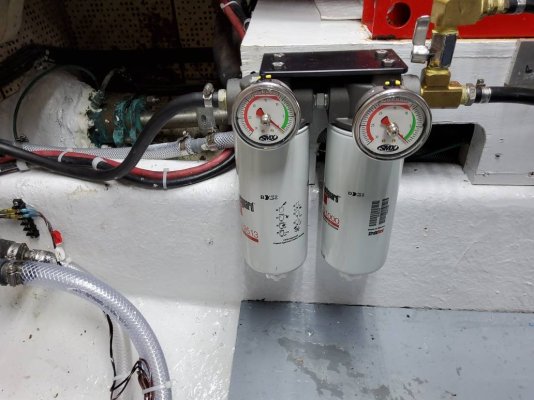BelleAurore
Veteran Member
- Joined
- Dec 10, 2012
- Messages
- 41
- Location
- USA
- Vessel Name
- Belle Aurore
- Vessel Make
- Hatteras LRC 48/53
Noticed a new slight fuel drip from one of my Racor filters so I removed the petcock thinking the problem was an o-ring at the bowl that needed replacement. I put on a new o-ring and after adding a small amount of fuel to check the seal the leak persisted. That’s when I removed the bowl for a closer look and found it riddled with cracks and fractures at the threaded plug end. I would never have stopped the leak because fuel was leaking from the sides of the threaded end. The thought of a 900 series Racor blowing apart while underway is the kind of stuff that keeps me up at night. Four new bowls and parts are on the way, but there is just no end to the things one must inspect thoroughly on an older boat.

